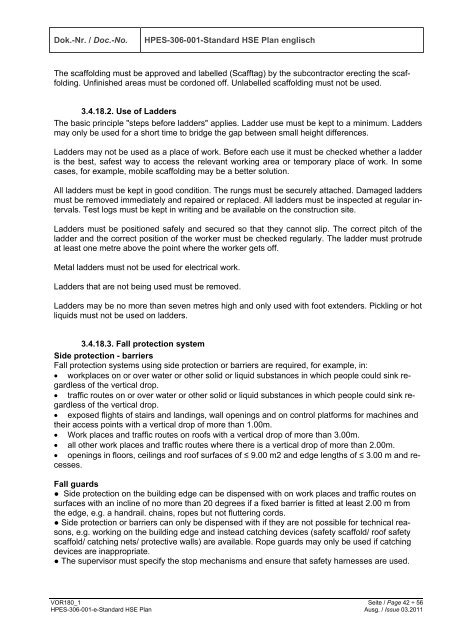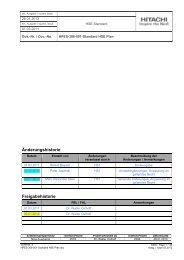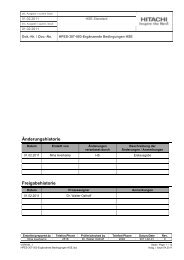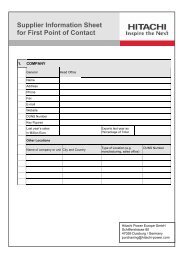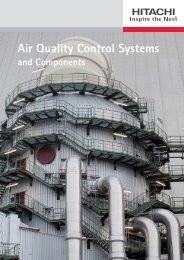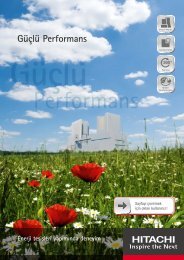Show HSE plan - Hitachi Power Europe GmbH
Show HSE plan - Hitachi Power Europe GmbH
Show HSE plan - Hitachi Power Europe GmbH
- No tags were found...
Create successful ePaper yourself
Turn your PDF publications into a flip-book with our unique Google optimized e-Paper software.
Dok.-Nr. / Doc.-No.HPES-306-001-Standard <strong>HSE</strong> Plan englischThe scaffolding must be approved and labelled (Scafftag) by the subcontractor erecting the scaffolding.Unfinished areas must be cordoned off. Unlabelled scaffolding must not be used.3.4.18.2. Use of LaddersThe basic principle "steps before ladders" applies. Ladder use must be kept to a minimum. Laddersmay only be used for a short time to bridge the gap between small height differences.Ladders may not be used as a place of work. Before each use it must be checked whether a ladderis the best, safest way to access the relevant working area or temporary place of work. In somecases, for example, mobile scaffolding may be a better solution.All ladders must be kept in good condition. The rungs must be securely attached. Damaged laddersmust be removed immediately and repaired or replaced. All ladders must be inspected at regular intervals.Test logs must be kept in writing and be available on the construction site.Ladders must be positioned safely and secured so that they cannot slip. The correct pitch of theladder and the correct position of the worker must be checked regularly. The ladder must protrudeat least one metre above the point where the worker gets off.Metal ladders must not be used for electrical work.Ladders that are not being used must be removed.Ladders may be no more than seven metres high and only used with foot extenders. Pickling or hotliquids must not be used on ladders.3.4.18.3. Fall protection systemSide protection - barriersFall protection systems using side protection or barriers are required, for example, in: workplaces on or over water or other solid or liquid substances in which people could sink regardlessof the vertical drop. traffic routes on or over water or other solid or liquid substances in which people could sink regardlessof the vertical drop. exposed flights of stairs and landings, wall openings and on control platforms for machines andtheir access points with a vertical drop of more than 1.00m. Work places and traffic routes on roofs with a vertical drop of more than 3.00m. all other work places and traffic routes where there is a vertical drop of more than 2.00m. openings in floors, ceilings and roof surfaces of ≤ 9.00 m2 and edge lengths of ≤ 3.00 m and recesses.Fall guards● Side protection on the building edge can be dispensed with on work places and traffic routes onsurfaces with an incline of no more than 20 degrees if a fixed barrier is fitted at least 2.00 m fromthe edge, e.g. a handrail. chains, ropes but not fluttering cords.● Side protection or barriers can only be dispensed with if they are not possible for technical reasons,e.g. working on the building edge and instead catching devices (safety scaffold/ roof safetyscaffold/ catching nets/ protective walls) are available. Rope guards may only be used if catchingdevices are inappropriate.● The supervisor must specify the stop mechanisms and ensure that safety harnesses are used.VOR180_1 Seite / Page 42 ÷ 56HPES-306-001-e-Standard <strong>HSE</strong> Plan Ausg. / Issue 03.2011


